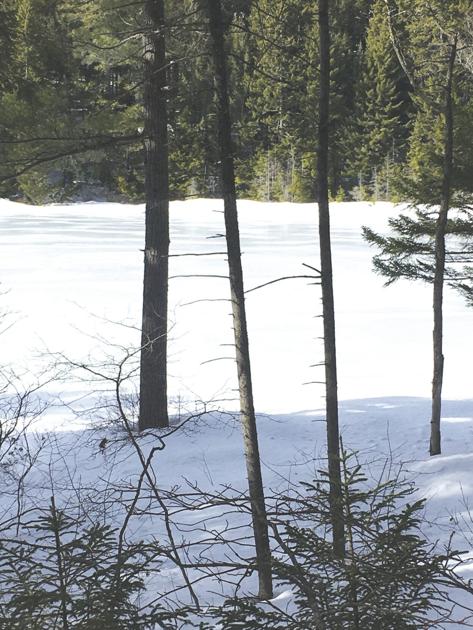Whether you are a snow lover or a snow hater, this winter has been an easy one. Snow was less than normal. Temperatures stayed above normal longer than is typical. We have had far worse winters.
I am a snow lover. Being a creature of the woods, it is easier to get around the forests in winter with snowpack in the woods. Snow tells you stories that you do not see. Bobcats stalking prey. Owls grabbing a mouse for a meal. Coyotes eating carrion.
Strapping on a pair of snowshoes, one glides over the surface of the snow. This makes for easy access throughout the woods. Foliage is off the trees, so vision is maximized. Looking for ponds that hold brook trout is as easy as it gets.
With the lower snowpack and the early warm temperatures, there is limited time left to seek out these remote places that are great brook trout fisheries. Some are kettle ponds. Some are beaver flowages. Some are old log holding ponds for winter cut pulp wood. All hold vast potential for a summer day of casting flies for wild brook trout.
We spent Wednesday checking out waters that we enjoy fishing. These remote waters can change from year to year, so it pays to do some scouting in advance of the coming season. This is the pre-work we do, much like deer hunters do in anticipation of their hunting season. Smart anglers spend as much time scouting as they do fishing.
On this day, we headed into the White Mountain National Forest. We have found several fine ponds and beaver flowages in the Forest. The easy winter was easy on the waters we explored. Water levels were good. Spring holes were visible. The ice, while still very white, looked normal for this time of year.
One waterbody had signs of otter activity. Otters favorite winter food is brook trout. If you find otter slides into the waters you are exploring, rest assured that there will be brook trout in the water body come spring.
Returning home, it was straight to the fly tying desk. Knowing there are waters holding wild brook trout gets the tying juices flowing. Early season flies are streamers tied in size 10 and 12 on 6x long hooks. Edson Tigers. Humongous. Golden Demon. Wardens Worry. The flies tie quickly and start to fill the fly box.
Switching to wet flies, only the brightest colored flies are tied. Parmachenee Belle. Surprise. Silver Doctor. Jennie Lind. Antoine No. 5. Catching colorful brook trout on colorful flies adds to dreams of days to come. I am not sure there is anything more satisfying then floating in a remote pond and imagining that it is 1920. Such is the allure of remote ponds and why we hunt for these special locations during our winter snowshoe hikes.
Wet flies allow us to tie our creations on barbless hooks. This is a new phenomenon on the fly tying scene. Catching and then releasing a fish has finally taken hold. Lee Wulff would be proud.
The final ties are dry flies. Royal Wulff. White Wulff. Renegade. Gordon. Pink Lady. Flies that the wild brook leap right out of the water to grab. So visually stimulating.
Steve Angers, a native to the Conway area, is the author of the book “Fly Fishing New Hampshire’s Secret Waters” and operates the North Country Angler.
Credit: Source link































